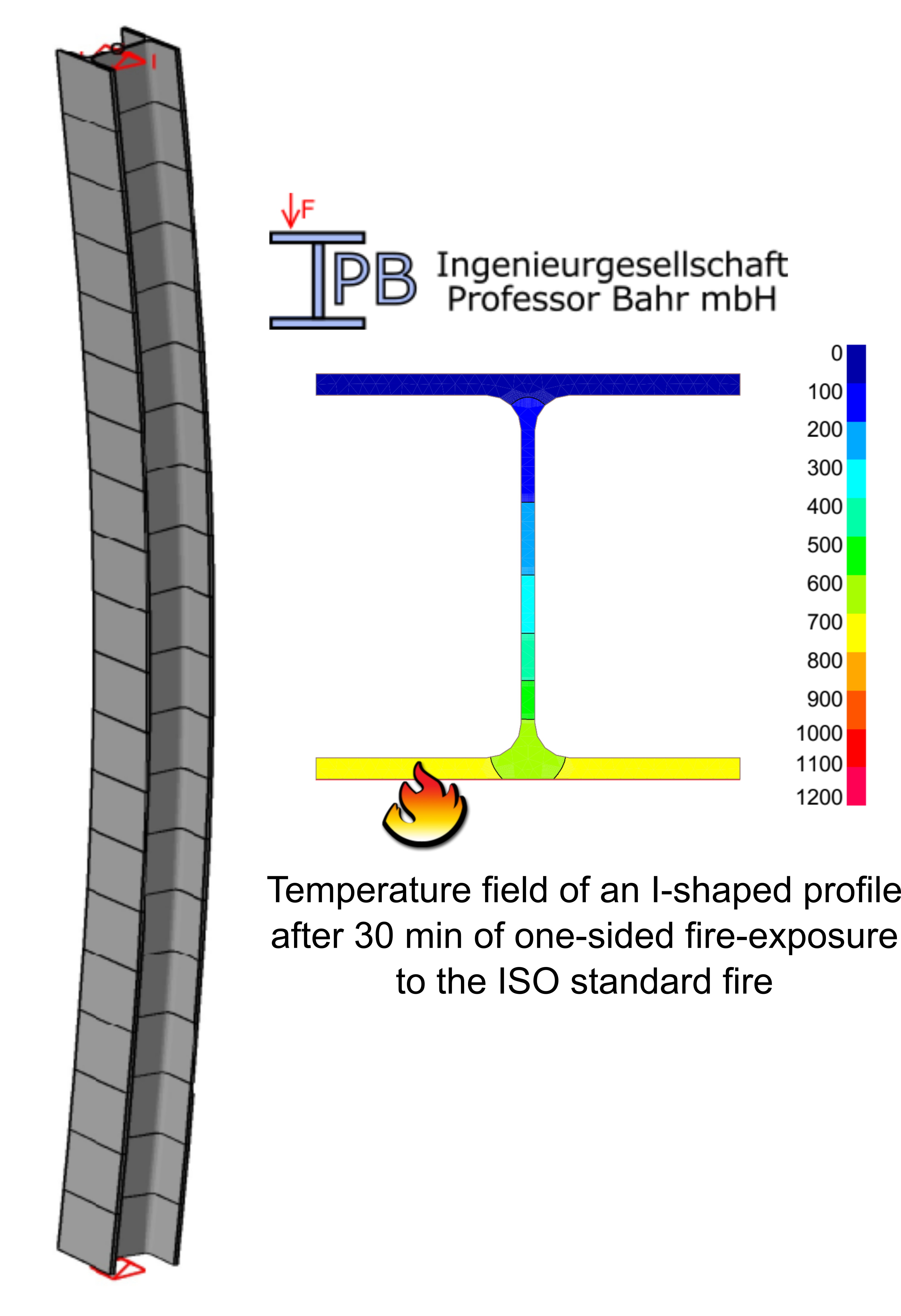Fire design of steel structures
Steel structures in buildings

In the construction industry steel structures are used for example in high-rise buildings, office and administrative buildings as well as industrial halls. According to the respective state building regulations, the structure must meet the requirements for a certain fire resistance class, which depends on the building class. Industrial halls are an exception, because the model industrial building guideline in Germany (MIndBauRL) facilitates fire protection. For halls with a fire area of more than 1800 m², however, the fire resistance class R30 must also be met.
Advantages of fire design for steel structures
With the aid of fire design, we can efficiently demonstrate the constructive fire protection of steel constructions for your projects. It may even be possible to realize unprotected steel structures for fire resistance class R30 (e.g. for emergency stairways ) with low load utilization. Regarding ceiling beams (solid profiles or truss girders) it is sometimes possible to avoid fire protection material (intumescent, cladding with plasterboard or spray plaster) with a more precise consideration of the gas temperatures. This of course save costs.
Furthermore, we can take favorable influences into account, such as partial fire exposure. The picture above shows a one-sided flaming of the HE-A220 profile. This situation occurs regularly when the column is integrated in an outer wall. As can be seen in the thermal analysis, a clear temperature gradient occurs in the cross section, with the fire-remote parts of the cross-section having a significantly greater load capacity than the fire-facing parts.
In addition, we can also calculate sway steel structures (such as cantilevers or sway frames) that are not covered by the simplified design methods in EN 1993-1-2. Also, in terms of fire protection, more favorable steel types such as stainless steel or hot-dip galvanized steel can be taken into account in our fire design.
Fire design is useful in new buildings, if necessary to completely dispense with structural protection measures for steel components or to optimize the arrangement of the fire protection material. For refurbishments in old buildings and existing buildings, components that do not meet the current standards with regard to fire protection, can be checked for adequate load-bearing capacity in case of fire and can be optimized by fire design.
Non-binding initial consultation
It is best to call us directly and describe your specific task. Or send us an email with some key data. On this basis, we can discuss the framework conditions resulting in an attractive offer.